We are thrilled to have been able to catch up with one of our newest Big Draw Ambassadors, Liz Atkin, to talk all about her incredible work as an artist and mental health advocate, and about how drawing has helped her battle with anxiety and compulsive skin picking.
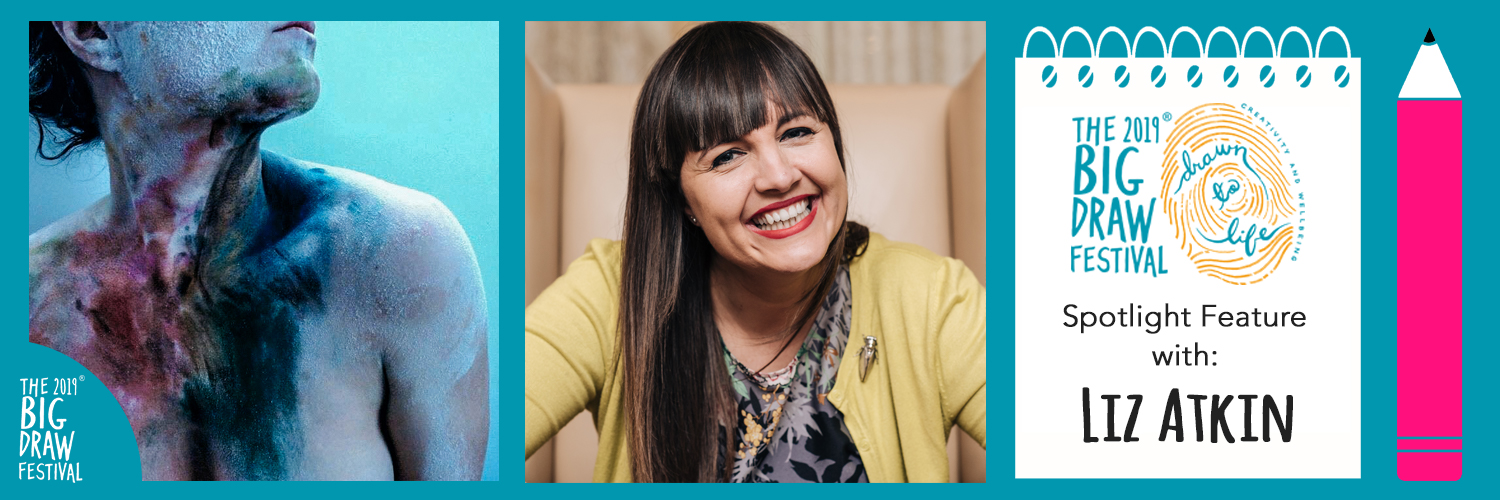
[Blue (2013), photo of Liz by Jillian Clark.]
Hi Liz! Thanks so much for taking the time to talk with us today. We are absolutely thrilled to have you as one of our Ambassadors for The 2019 Big Draw Festival! This year’s theme is ‘Drawn to Life: Creativity and Wellbeing’, a topic which you promote on a daily basis through your work. You are an advocate for mental illness and compulsive skin picking; for those of our readers who may not have heard of it, could you explain what compulsive skin picking is?
I’m so excited to be an Ambassador for The 2019 Big Draw Festival – thank you for having me!
I am an artist and my work re-imagines my Dermatillomania, or compulsive skin picking. Compulsive skin picking is a psychological condition thought to affect one in 25 people. Individuals who struggle with this disorder touch, rub, scratch, pick at, or dig into their skin in an attempt to improve perceived imperfections, often resulting in tissue damage, discoloration, or scarring. Occasionally picking at the skin is a very common human behaviour but compulsive skin picking is in a family of body-focused repetitive behaviours (BFRBs), along with the hair pulling disorder (Trichotillomania) and other types of self-grooming which results in damage to the body, and significant distress.
My experience of skin picking started from a young age. The illness wasn’t actually diagnosed until my early 30s, by that point I’d been picking for the best part of 25 years and it was only through internet searches that I realised it had a name. I found the behaviour soothing – it would block out tension, anxiety and uncomfortable emotions as through picking, and I’d hit a 'zoned-out' sense of calm. It developed into something I did subconsciously so there were hours where I would be picking my skin without really thinking about it. The disorder became a private vicious cycle that totally dominated my life behind closed doors. My body was littered with wounds and marks beneath my clothes. No one knew about it. I took care to mask and hide the illness and behaviour from those closest to me, wearing clothes that concealed the parts of my body covered in scabs and scars, making excuses and using make-up on my body to mask it.
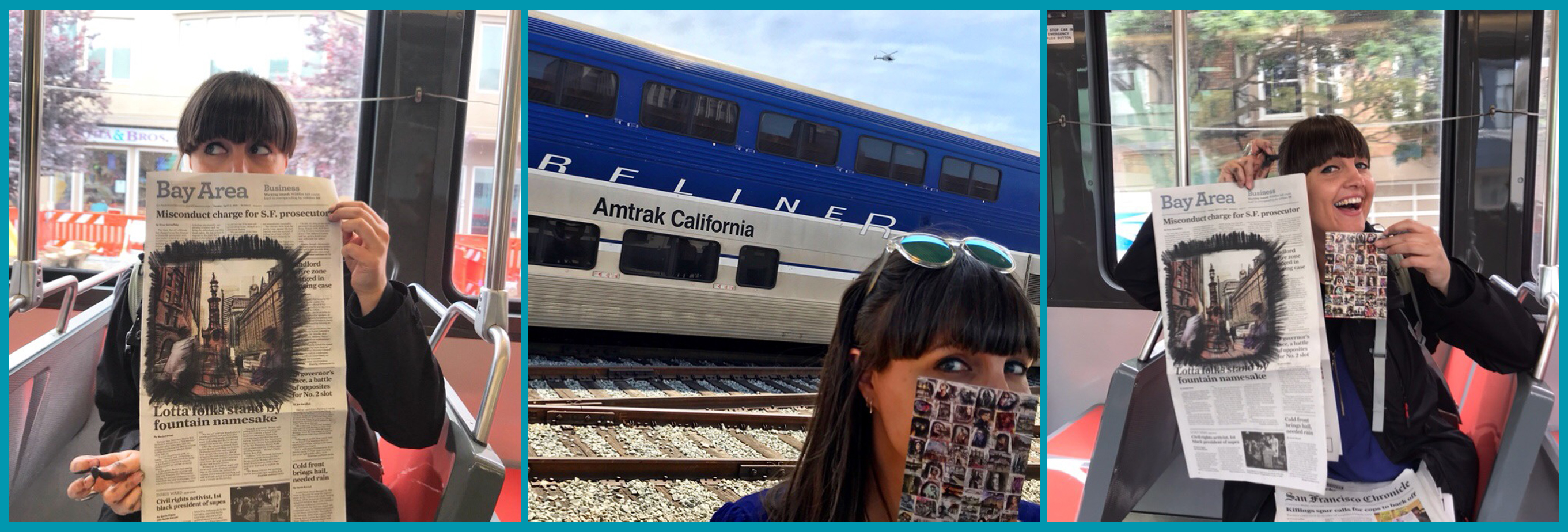
[Liz creating #CompulsiveCharcoal drawings in San Francisco, California.]
How did you discover that art could be used as therapy? I understand that it was through dance that you were able to study your everyday movement patterns, and make sense of the illness across your body. Was this a defining moment in your attitude towards compulsive skin picking?
In my early 30s I signed up for a Masters in Dance, and studying movement meant I could no longer avoid the physical behaviour I was hiding so carefully from everyone – I had to confront the illness head-on. As part of the course, we were encouraged to study our everyday movement patterns and for the first time I looked at how this illness dominated my physicality. Very slowly I began to document how, when and where the illness took place and I began to recognise the patterns of the illness was a unique dance – the repetitive movement of my hands on my body. Every time I felt the urge to pick, or noticed my patterning, I began attempting to turn it into something else, something creative. Initially I made films and photographic artworks inspired by those feelings. After my masters, my creative practice continued to develop and I explored the way my body moved and began transforming my body-focused repetitive behaviour itself, using textural materials like latex, clay, acrylic paint directly on my skin. In 2013, I made a connection to the Bethlem Gallery which is based at Bethlem Hospital, the world’s oldest psychiatric hospital, and my work was featured in a solo exhibition. It was then that I finally felt able to explain the truth behind the artwork.
My artworks have been exhibited in therapeutic settings and galleries in Los Angeles, Melbourne and London. I am now an advocate for mental health, the BFRB community, and dermatillomania, in the UK and around the world. I have presented on skin picking and my work for TEDx talk, the Wellcome Collection, and at the Royal Society of Public Health, Body Dysmorphia Foundation Conference 2017, OCD Action Conference 2018 UK. I was the keynote speaker at TLC's 2016 Conference in Dallas USA and the keynote at Europe’s first conference for Skin Picking in Cologne Germany in 2018.
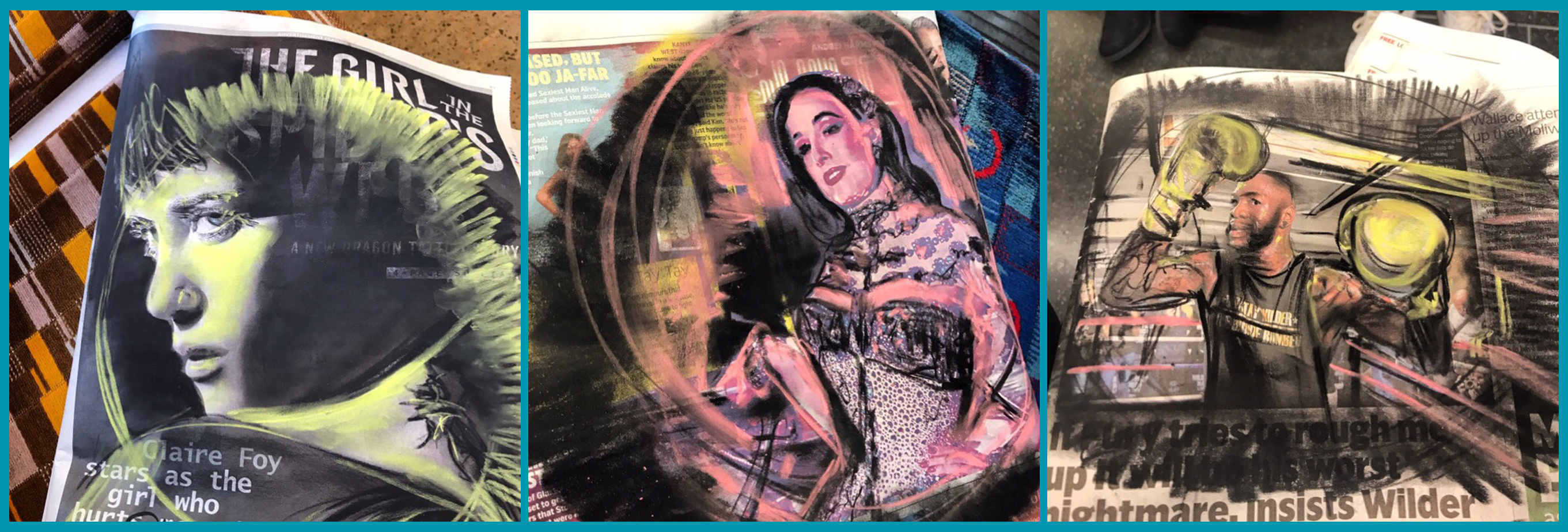
[#CompulsiveCharcoal]
What role does drawing play in your life?
Drawing is one of my greatest tools for recovery and I carry a small piece of charcoal in my pocket, so I can draw wherever I am. Drawing has helped me to channel the tense and uncomfortable energy of my compulsive skin picking disorder and anxiety into something mindful and creative, each and every mark on the paper is a moment to refocus my fingers and relax. Drawing is very absorbing, the rhythmic repetitive motion of marks and smudges on paper is energising but also very soothing for me. I work with charcoal which is messy and the dust quickly covers my fingers, it prevents me from moving my hands to pick at the skin on my face or body. The touch and repetition of drawing has a very strong correlation for me to the skin picking, my hands move fast; perhaps that is why it has become so affective.
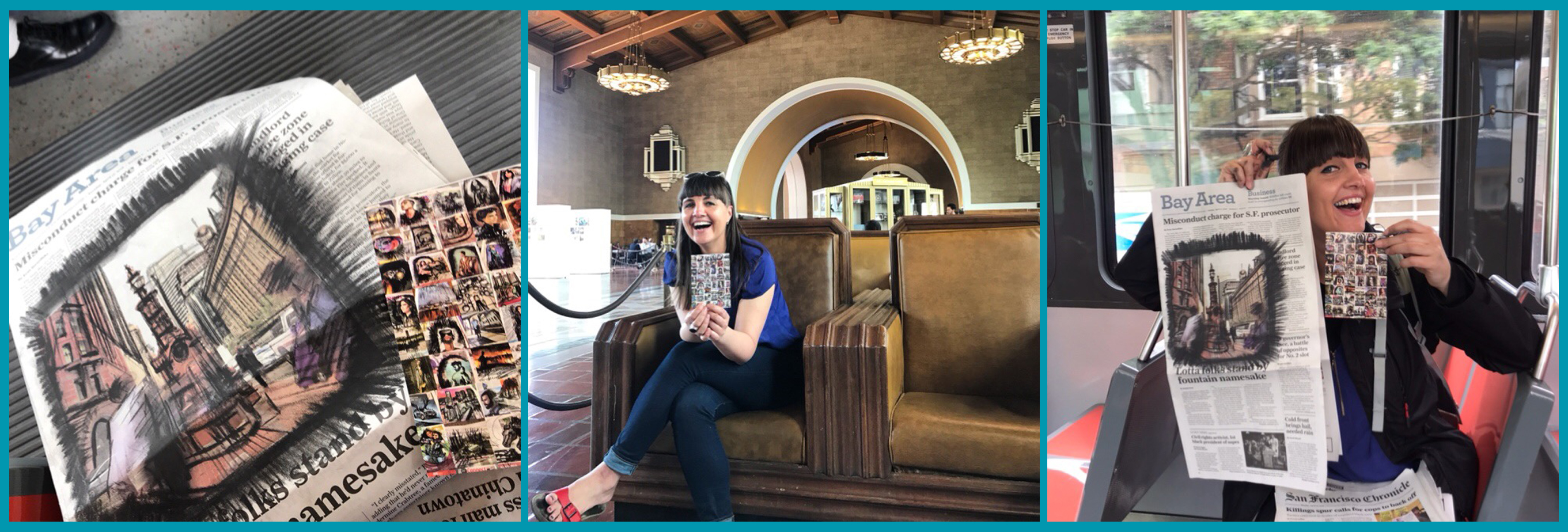
[#CompulsiveCharcoal]
To refocus your hands and fingers during journeys, you create ‘Compulsive Charcoal’ artworks on discarded newspapers and give these to commuters as an act of kindness and advocacy. I’m fascinated to know; how did the idea for these Compulsive Charcoals first come about?
The series, entitled ‘Compulsive Charcoal’, began in October 2015. Following a period of depression and chronic anxiety, my skin picking had returned very severely. I hadn’t drawn since I was at school, but a friend had bought me a box of charcoal as a present and I started drawing. I realised that drawing rapidly reduced my skin picking and stopped panic attacks from happening on my commute to work. So, I started taking a little sketchbook with me. But when it ran out on a journey from south to north London, I was picking my fingers badly, so I picked up a discarded newspaper left on the seat beside me and started to draw. Slowly, this has evolved to become a daily action. What started as a personal way to cocoon myself and transpose tension and anxiety, quickly became about the community around me in the carriage as people were intrigued and I started giving the creations away. The act of gifting the drawings became a compassionate thing, but also a moment of connection to raise awareness for mental health and compulsive skin picking. I realised I had an opportunity to communicate why I was drawing, to share information and destigmatise this devastating condition. I've created and given away more than 17,000 of these #CompulsiveCharcoal newspaper drawings so far to commuters on public transport in London, New York, San Francisco, Singapore, Cologne and more. The momentum of the series has garnered a lot of positive attention as many people began joining in on social media to share the drawing, or information postcard they received. CompulsiveCharcoal has featured on TEDx, BBC News, Huffington Post, the Metro, Buzzfeed, The Londonist, and more.
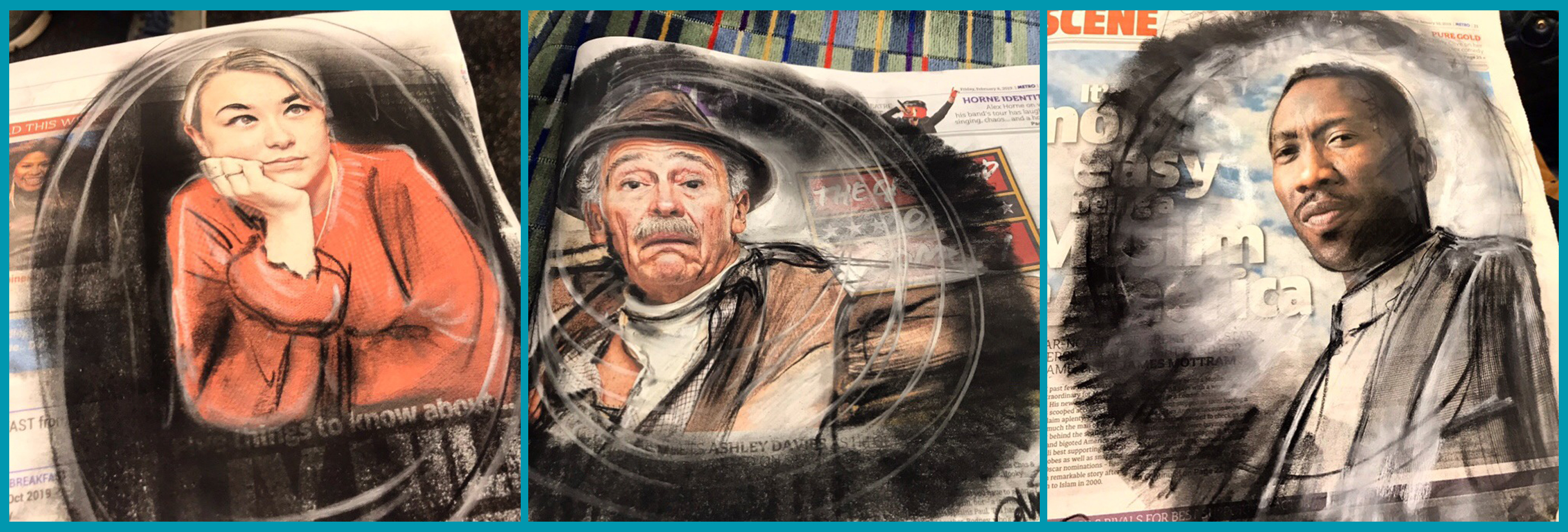
[#CompulsiveCharcoal]
Do you think that this year’s Festival theme ‘Drawn to Life’ will help to encourage some recognition of the transformative effects that engagement with the arts can bring?
Art is one of the oldest cultural practices humans have. It is a life-enhancing way to connect to our imagination, express and explore what we experience, how we see and perceive the world around us and within us, and it is a resourceful healer. We know art can enhance our lives and bring us great joy, but it can also impact and significantly improve our wellbeing and mental health. Drawing helps synchronize hand and eye, body and mind, it can be used to elicit a relaxation response. Mindfulness can be achieved by bringing attention to seeing or sensing, but drawing also slows down and makes us embody what we see or feel. It is non-verbal so we can draw to express things we might not always be able to explain in language. Drawing can connect us to a state of flow where we are fully involved in the moment, it helps us lose self-consciousness, and we can just concentrate on our actions.
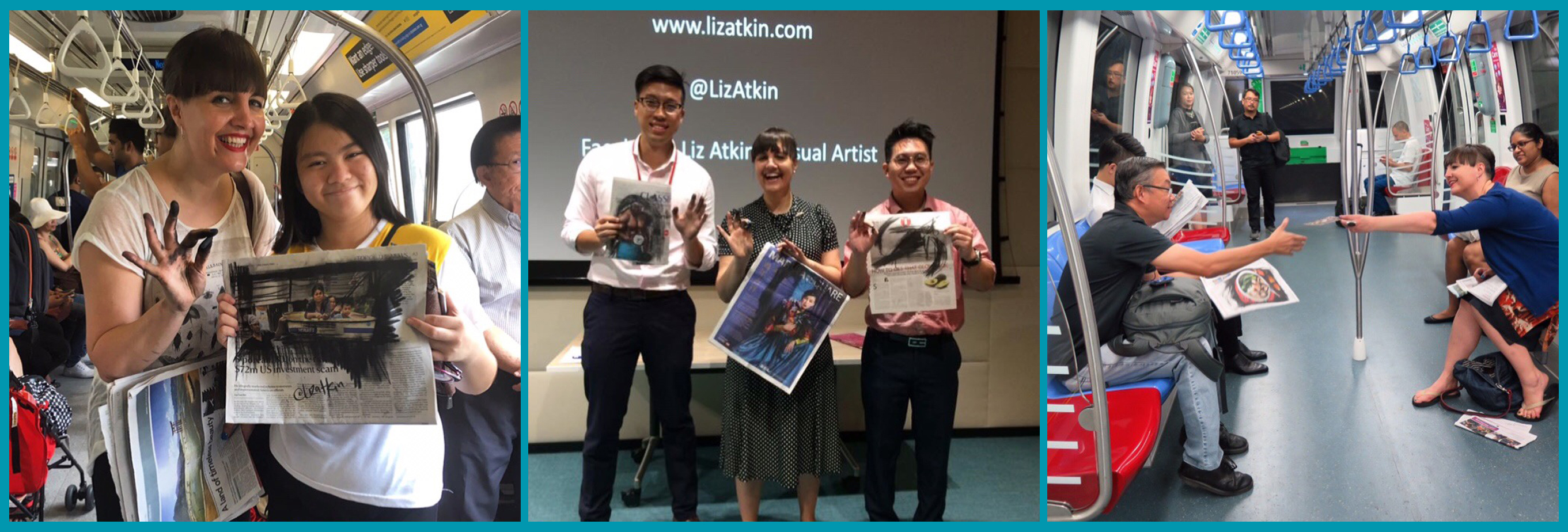
[Liz creating #CompulsiveCharcoal drawings in Singapore for the M1 Fringe Festival 2017.]
Walk us through a typical day for you (if there is such a thing)!
I am freelance so no two days are the same! I run my own children’s art classes in south London, and drop-in art sessions for service users and residents at St Mungos. I am working as Artist in Residence to deliver immersive messy play art for early years with the Acorn Project, a two year initiative to support the wellbeing and creativity of toddlers and their families, funded by Stratford Circus and BBC Children in Need. That means I am usually head to toe in paint by the end of the week! Absolute joy!
Currently I am working with teachers in primary schools around Brixton to help make art part of every day in the classroom as part of a Paul Hamlyn Foundation funded Teacher Development Fund.
Every day I create my free #CompulsiveCharcoal drawings on my commutes around the city, and draw in my studio on Havelock Walk, an art community in south London where I am based.
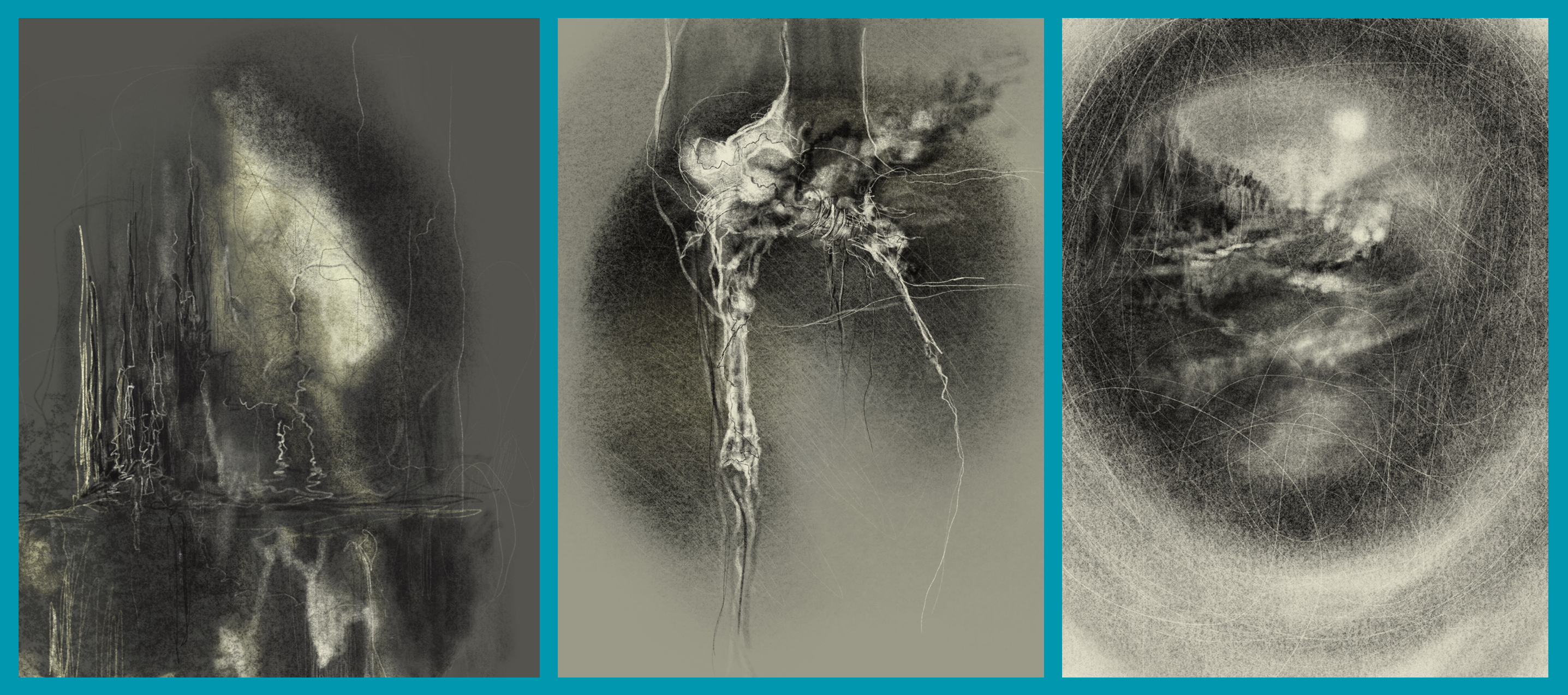
[Anxiety Drawings (2018-9).]
At The Big Draw we believe that everyone can draw, and everyone should have access to drawing. We hope that this year’s theme will encourage people to explore the transformative effects that creativity can have on our wellbeing, and focus on the process rather than the finished product. What advice would you give to anyone who feels they don’t have the confidence, nor the ability, to draw?
The more I draw the more I want to inspire others to draw too. Give yourself permission to give it a go and have fun - by exploring, experimenting, taking a risk, drawing might take you in an unexpected direction, or not turn out how you want or expect, but that’s ok. You can always try again. I have seen time and again how people who don’t think they can draw can get lost in the pleasure of mark making. I think it’s important to invite people to be playful, relaxed and in the moment with the materials. Everyone can draw. Movement and touch are part of the process of drawing, so give it a go and make your mark, move the material, whether it’s a pencil, a pen, chalk, charcoal, paint on a brush or ink on the page, surface, the wall, the floor. By moving and making we begin connecting with our whole selves, we are adapting and creating as the marks appear, making choices moment by moment.

Thanks so much for chatting with us, Liz!
Have you been inspired by Liz's interview and The Big Draw Festival 2019 theme: #DrawntoLife?
Why not join our global Festival in 2019? Registration is now open! Find out more about the benefits of becoming an organiser here and other ways to support The Big Draw's mission here.
Are you suffering with symptoms that sound similar to Compulsive Skin Picking? Liz offers some advice on what to do if you have CSP, as well as some helpful tips on how to cope with the disorder, which can be found
here.